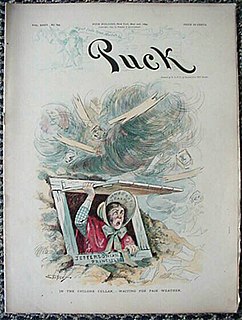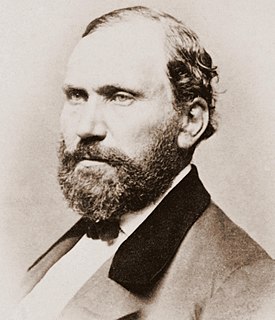
Cross-cultural communication is a field of study that looks at how people from differing cultural backgrounds communicate, in similar and different ways among themselves, and how they endeavor to communicate across cultures. Intercultural communication is a related field of study.

Acculturation is a process of social, psychological, and cultural change that stems from the balancing of two cultures while adapting to the prevailing culture of the society. Acculturation is a process in which an individual adopts, acquires and adjust to a new cultural environment. Individuals of a differing culture try to incorporate themselves into the new more prevalent culture by participating in aspects of the more prevalent culture, such as their traditions, but still hold onto their original cultural values and traditions. The effects of acculturation can be seen at multiple levels in both the devotee of the prevailing culture and those who are assimilating into the culture.
Intercultural communication is a discipline that studies communication across different cultures and social groups, or how culture affects communication. It describes the wide range of communication processes and problems that naturally appear within an organization or social context made up of individuals from different religious, social, ethnic, and educational backgrounds. In this sense it seeks to understand how people from different countries and cultures act, communicate and perceive the world around them.
Inter-cultural communication principles guide the process of exchanging meaningful and unambiguous information across cultural boundaries, in a way that preserves mutual respect and minimises antagonism. For these purposes, culture is a shared system of symbols, beliefs, attitudes, values, expectations, and norms of behaviour. It refers to coherent groups of people whether resident wholly or partly within state territories, or existing without residence in any particular territory. Hence, these principles may have equal relevance when a tourist seeks help, where two well-established independent corporations attempt to merge their operations, and where politicians attempt to negotiate world peace. Two factors have raised the importance of this topic:

Intercultural learning is an area of research, study and application of knowledge about different cultures, their differences and similarities. On the one hand, it includes a theoretical and academic approach. On the other hand, it comprises practical applications such as learning to negotiate with people from different cultures, living with people from different cultures, living in a different culture and the prospect of peace between different cultures.
The ethnography of communication (EOC), originally called the ethnography of speaking, is the analysis of communication within the wider context of the social and cultural practices and beliefs of the members of a particular culture or speech community. It is a method of discourse analysis in linguistics that draws on the anthropological field of ethnography. Unlike ethnography proper, though, EOC takes into account both the communicative form, which may include but is not limited to spoken language, and its function within the given culture.
Cross-cultural psychology is the scientific study of human behavior and mental processes, including both their variability and invariance, under diverse cultural conditions. Through expanding research methodologies to recognize cultural variance in behavior, language, and meaning it seeks to extend and develop psychology. Since psychology as an academic discipline was developed largely in North America and Europe, some psychologists became concerned that constructs accepted as universal were not as invariant as previously assumed, especially since many attempts to replicate notable experiments in other cultures had varying success. Since there are questions as to whether theories dealing with central themes, such as affect, cognition, conceptions of the self, and issues such as psychopathology, anxiety, and depression, may lack external validity when "exported" to other cultural contexts, cross-cultural psychology re-examines them using methodologies designed to factor in cultural differences so as to account for cultural variance. Although some critics have pointed to methodological flaws in cross-cultural psychological research and claim that serious shortcomings in the theoretical and methodological bases used impede rather than help the scientific search for universal principles in psychology, cross-cultural psychologists are turning more to the study of how differences (variance) occur, rather than searching for universals in the style of physics or chemistry.
Integrative communication theory is a theory of cross-cultural adaptation proposed by Young Yun Kim. The first widely published version of Kim's theory is found in the last three chapters of a textbook authored by William Gudykunst with Young Yun Kim as second author. See acculturation and assimilation.
Anxiety/Uncertainty Management (AUM) theory was introduced by William B. Gudykunst to define how humans effectively communicate based on their balance of anxiety and uncertainty in social situations. Gudykunst believed that in order for successful intercultural communication a reduction in anxiety/uncertainty must occur. This is assuming that one person within the intercultural encounter is a stranger. AUM is a theory based on the Uncertainty Reduction Theory (URT) which was introduced by Berger and Calabrese in 1974. URT provides much of the initial framework for AUM, and much like other theories in the communication field AUM is a constantly developing theory, based on the observations of human behaviour in social situations.

Face-Negotiation Theory is a theory conceived by Stella Ting-Toomey in 1985, to understand how people from different cultures manage rapport and disagreements. The theory posited "face", or self-image when communicating with others, as a universal phenomenon that pervades across cultures. In conflicts, one's face is threatened; and thus the person tends to save or restore his or her face. This set of communicative behaviors, according to the theory, is called "facework". Since people frame the situated meaning of "face" and enact "facework" differently from one culture to the next, the theory poses a cultural-general framework to examine facework negotiation. It is important to note that the definition of face varies depending on the people and their culture and the same can be said for the proficiency of facework.
A culture gap is any systematic difference between two cultures which hinders mutual understanding or relations. Such differences include the values, behavior, education, and customs of the respective cultures. As international communications, travel, and trade have expanded, some of the communication and cultural divisions have lessened. Books on how to handle and be aware of cultural differences seek to prepare business people and travelers. Immigrants and migrant laborers need to learn the ways of a new culture. Tourists can also be confronted with variants in protocols for tipping, body language, personal space, dress codes, and other cultural issues. Language instructors try to teach cultural differences as well.
Identity management theory is an intercultural communication theory from the 1990s. It was developed by William R. Cupach and Tadasu Todd Imahori on the basis of Erving Goffman's Interaction ritual: Essays on face-to-face behavior (1967). Cupach and Imahori distinguish between intercultural communication and intracultural communication.
Telecollaboration is a form of network-based language teaching which emerged in language teaching in the 1990s. It refers to the pedagogic practice of bringing together classes of foreign language learners through computer-mediated communication for the purpose of improving their language skills, intercultural communicative competence and digital literacies. Telecollaboration, also increasingly referred to as online intercultural exchange (OIE), is recognized as a field of computer-assisted language learning as it relates to the use of technology in language learning. Outside the field of language education this type of pedagogic practice is increasingly being used to internationalize the curriculum and offer students the possibility to engage with peers in other parts of the world in collaborative online projects. Different terms are used to refer to this practice, for example virtual exchange, collaborative online international learning, and globally networked learning.
Intercultural communicative competence in computer-supported collaborative learning is the application of computer-supported collaborative learning (CSCL) to provide intercultural communicative competence (ICC).

Interpersonal communication is an exchange of information between two or more people. It is also an area of research that seeks to understand how humans use verbal and nonverbal cues to accomplish a number of personal and relational goals. Interpersonal communication research addresses at least six categories of inquiry: 1) how humans adjust and adapt their verbal communication and nonverbal communication during face-to-face communication; 2) how messages are produced; 3) how uncertainty influences behavior and information-management strategies; 4) deceptive communication; 5) relational dialectics; and 6) social interactions that are mediated by technology.
Individualistic culture is a society which is characterized by individualism, which is the prioritization or emphasis of the individual over the entire group. Individualistic cultures are oriented around the self, being independent instead of identifying with a group mentality. They see each other as only loosely linked, and value personal goals over group interests. Individualistic cultures tend to have a more diverse population and are characterized with emphasis on personal achievements, and a rational assessment of both the beneficial and detrimental aspects of relationships with others. Individualistic cultures have such unique aspects of communication as being a low power-distance culture and having a low-context communication style. The United States, Australia, Great Britain, Canada, the Netherlands, and New Zealand have been identified as highly individualistic cultures.
African American Communication: Exploring Identity and Culture is a 2003 book by Michael Hecht, Ronald L. Jackson II and Sidney A. Ribeau.
Intercultural intelligence, or ICI, is a term that is used for the capability to function effectively in culturally diverse settings and consists of different dimensions which are correlated to effectiveness in global environment. Intercultural intelligence differs from cultural intelligence in that it is based from the belief in interculturalism while CQ is based from the belief in multiculturalism. The term was first used in 2006 in response to the qualities observed in international executives that enabled them to succeed globally.
Virtual Exchange is a type of education program that uses technology to allow geographically-separated people to interact and communicate. This type of activity is most often situated in educational programs in order to increase mutual understanding, global citizenship, digital literacies, and language learning. Models of virtual exchange are also known as telecollaboration, online intercultural exchange, globally networked teaching and learning, collaborative online international learning (COIL). Non-profit organizations such as Soliya and the Sharing Perspectives Foundation have designed and implement virtual exchange programs in partnership with universities and youth organizations. In 2017 the European Commission published a feasibility study into virtual exchange and in 2018 the Erasmus+ Virtual Exchange project was launched in Europe and Southern Mediterranean countries.









